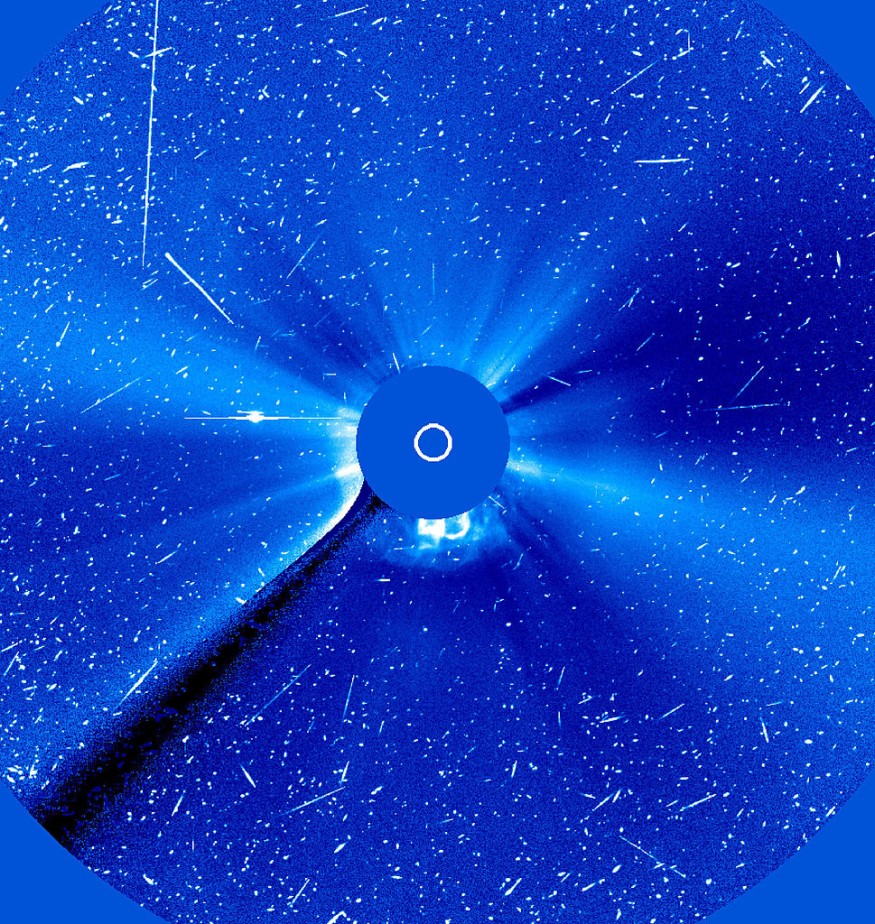Ellerman bombs and solar snakes were observed by astronomers moving on the Sun's surface following a plasma eruption or a disturbance of its magnetic field lines which only became visible earlier this week.
The rare solar phenomena served as a precursor to a larger eruption or an impending solar storm.
Massive Solar Eruption

The European Space Agency (ESA) on Monday, November 14, stated that the solar snakes are tube of cooler atmospheric gases that are "snaking" its way towards the Sun's magnetic field.
The space snake was first seen on September 5, where it was guided by a long filament that is reaching another side of the Sun.
In addition to the snaking cylinder of gases, the Ellerman bombs reportedly exploded from Sunspot AR3140.
The latest developments from the Sun are also in line with a recent solar flare that released a geomagnetic storm and caused radio blackouts in Australia and New Zealand earlier in November.
What are Ellerman Bombs?
Ellerman bombs or EBs are small-scale intense bright light that are widely believed to be signs of magnetic reconnection around the temperature minimum region of the Sun's atmosphere, according to the Astrophysics Data System (ADS), which is operated by the Smithsonian Astrophysical Observatory under the NASA Cooperative Agreement.
EBs are named after the astronomer and physicist Ferdinand Ellermand, who studied the solar phenomenon during the 1900s and determined the bombs are actual magnetic explosions triggered by the collision of opposite polarities.
EBs have a flame-like morphology or appearance when observed near the solar limb of our solar system's only star.
Recent astronomical observations from the Interface Region Imaging Spectrograph (IRIS) also unraveled another type of small-scale reconnection event called an ultraviolet (UV) burst, located in the Sun's lower solar atmosphere, the Smithsonian Astrophysical Observatory says.
With this, astronomers and scientists are reportedly still debating on the exact relationship between EBs and UV bursts.
However, the ADS, through its study published in The Astrophysical Journal Letters in April 2019, determined that some of the UV bursts and EBs likely form during different heights during a common reconnection process.
What is a Solar Snake?
The solar snake is a "stream of cooler plasma" compressed between magnetic field lines, according to Space.com, which said that filament that looks like a snake crawl across the Sun's surface prior to the massive plasma eruption.
The said snake-like filament came from the said sunspot, a cooler region on our star's surface where the magnetic field lines are twisted.
These lines are also some of the main causes of solar activities and solar storms like a solar flare or coronal mass ejection (CME).
Although the solar snake is apparently not a solar storm, the ESA said it took three hours for the solar reptile to travel across the Sun's disk at a speed of 105 miles per second (170 kilometers per second) or 378,000 miles per hour (608,000 kilometers per hour).
The said solar event was followed by a CME and scientists think the two phenomena are connected, Space.com reported.
© 2025 NatureWorldNews.com All rights reserved. Do not reproduce without permission.





